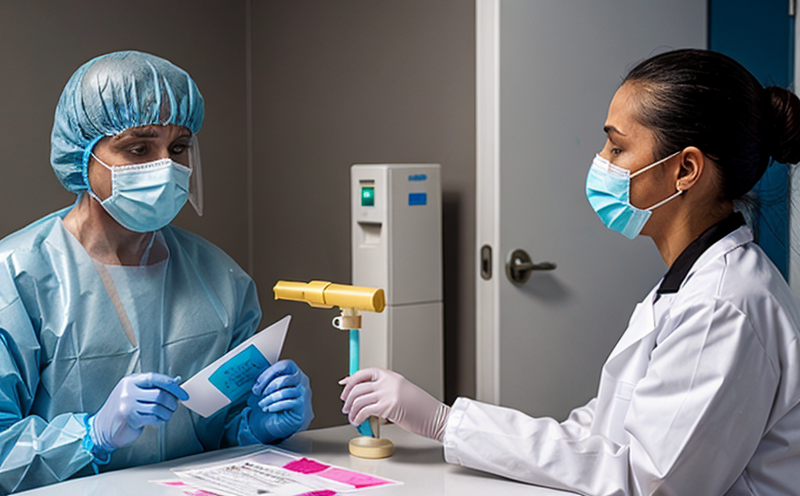Adenovirus Detection Testing in Wastewater
The detection of adenoviruses in wastewater is a critical tool for public health and environmental safety. Adenoviruses are a group of viruses that can cause respiratory illnesses, gastroenteritis, and conjunctivitis. Monitoring adenoviruses in wastewater helps identify potential risks before they spread to the general population or water systems.
The presence of adenoviruses in sewage effluents indicates their presence in treated wastewater outlets. This information is crucial for assessing the efficacy of treatment processes and ensuring that discharged water meets regulatory standards. By detecting adenoviruses, we can monitor the effectiveness of disinfection methods and identify any gaps in treatment.
The process involves collecting samples from various points within a wastewater treatment facility. Specimens are then prepared by concentrating viral particles, followed by nucleic acid extraction to isolate the genetic material for analysis using molecular techniques such as PCR (Polymerase Chain Reaction).
Our laboratory employs advanced technology and rigorous protocols to ensure accurate results. We utilize real-time quantitative PCR assays specifically designed for adenovirus detection, which provide highly sensitive and specific quantification of viral load in samples.
The importance of this testing cannot be overstated. It allows municipalities and treatment facilities to take proactive measures to prevent outbreaks by adjusting disinfection processes or implementing additional treatments if necessary.
Our service ensures compliance with international standards including ISO 15216-3, which provides guidelines for the detection of human enteric viruses in water. By adhering to these standards, we maintain high-quality testing practices and contribute to global health security efforts.
| Sample Collection Points | Preparation Method | Analysis Technique | Reporting Criteria |
|---|---|---|---|
| Treatment plant influent, effluent, and discharge points | Viral concentration followed by nucleic acid extraction | Real-time quantitative PCR assay | Quantification of viral load in terms of genome copies per liter (gc/L) |
This approach not only aids in the management of public health but also supports environmental sustainability goals. By providing data on adenovirus presence and concentration, our service empowers decision-makers to make informed choices regarding water quality control measures.
In conclusion, detecting adenoviruses in wastewater is an essential component of comprehensive infectious disease surveillance systems. Our laboratory offers reliable and accurate testing services that contribute significantly to safeguarding public health and maintaining clean water resources.
Why It Matters
The detection of adenoviruses in wastewater is vital for several reasons. Firstly, it serves as an early warning system for potential outbreaks by identifying the presence of pathogens before they reach the broader community.
Secondly, this testing helps ensure that treatment facilities are effectively removing harmful organisms from discharged water. Proper disinfection processes are crucial to prevent contamination of surface waters and groundwaters used for drinking or irrigation purposes.
Thirdly, monitoring adenoviruses in wastewater supports regulatory compliance with stringent environmental protection regulations globally. This data can influence policy decisions aimed at improving public health outcomes while protecting natural ecosystems.
Furthermore, the information gathered through these tests assists researchers and policymakers in understanding transmission patterns of viral infections more comprehensively. This knowledge is invaluable for developing targeted interventions to reduce disease incidence rates.
In summary, detecting adenoviruses in wastewater plays a pivotal role in maintaining both human health and environmental integrity. It enables proactive management strategies that ultimately lead to better overall wellbeing.
Scope and Methodology
The scope of our adenovirus detection testing includes sampling, sample preparation, analysis using real-time quantitative PCR, and reporting the results based on genome copies per liter (gc/L).
| Sample Collection Points | Preparation Method | Analysis Technique | Reporting Criteria |
|---|---|---|---|
| Treatment plant influent, effluent, and discharge points | Viral concentration followed by nucleic acid extraction | Real-time quantitative PCR assay | Quantification of viral load in terms of genome copies per liter (gc/L) |
The methodology follows strict guidelines outlined in ISO 15216-3, ensuring consistent and reliable results. Samples are collected from specified locations within the wastewater treatment facility to capture representative data.
Sample preparation involves concentrating viral particles followed by nucleic acid extraction to isolate genetic material suitable for PCR amplification. Real-time quantitative PCR is then performed using validated assays targeting specific regions of the adenovirus genome.
The results are reported as the number of viral genomes detected per liter of wastewater sample, providing valuable insights into the effectiveness of treatment processes and potential risks associated with discharged water.
International Acceptance and Recognition
The detection of adenoviruses in wastewater has gained significant recognition internationally due to its importance in public health and environmental protection. Standards such as ISO 15216-3 have established protocols for the detection of human enteric viruses, including adenoviruses.
Many countries have incorporated these guidelines into their national regulations regarding water quality and sanitation. Compliance with international standards ensures that testing methods are consistent across different regions, promoting global harmonization in monitoring practices.
Our laboratory adheres to these standards rigorously, ensuring accurate and reliable results that can be trusted by regulatory bodies worldwide. By providing data that meets or exceeds international benchmarks, we contribute to the ongoing efforts towards improving public health and environmental sustainability.
The widespread acceptance of this testing approach reflects its critical role in maintaining high standards of water quality and preventing the spread of infectious diseases. As more research supports the benefits of adenovirus detection in wastewater, it is likely that even stricter regulations will be implemented in various sectors globally.





